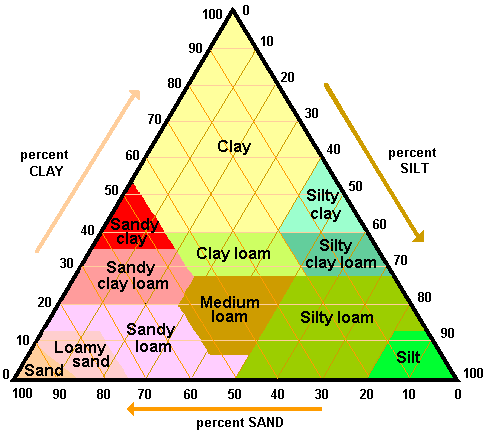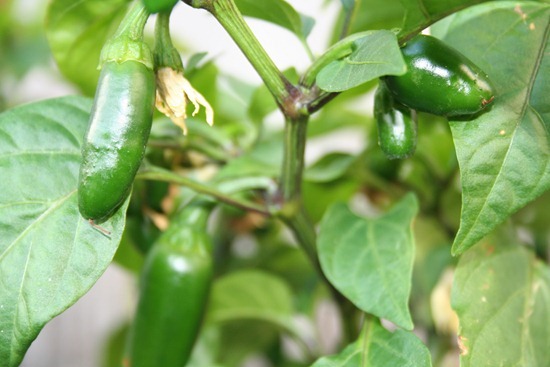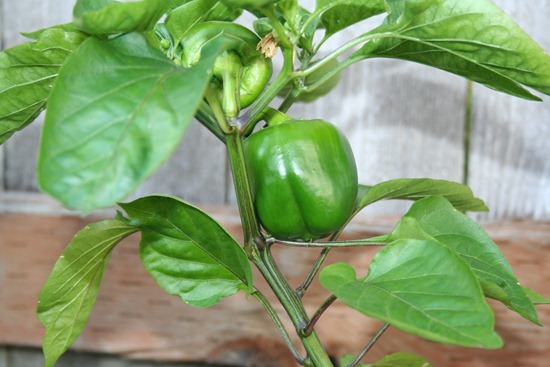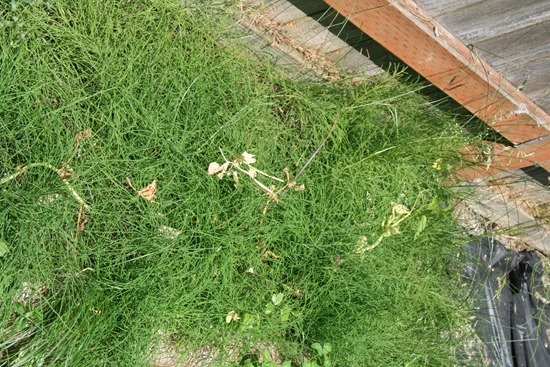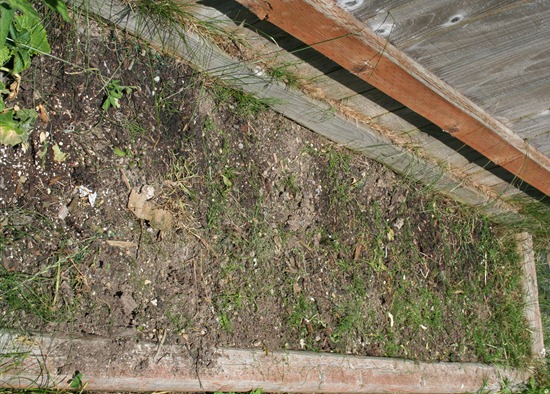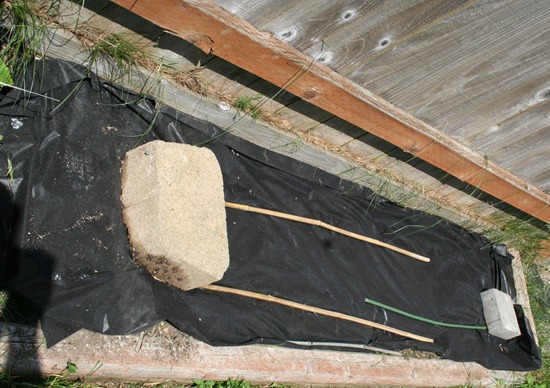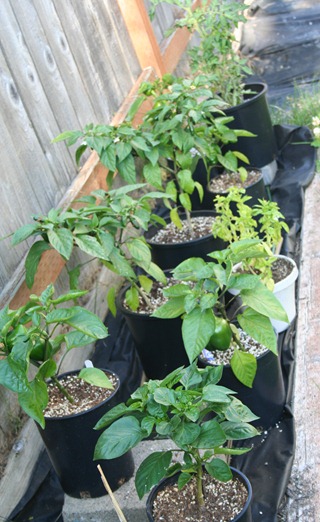How to find the soil composition of your garden
13.8 years ago science fair, soil composition, soil test
Knowing your soil composition is very important if you are attempting to amend your existing soil to get your premium soil for growing. You soil is made up of four components; sand, silt, clay, and organic material.
Sand has the largest particle size of all these components and creates large gaps between them which is excellent for water to flow through and roots to grow in. On the contrast it is terrible for retaining water and will dry out quickly.
Silt has medium size particles and if you had to choose a single component for effective growing this would be it. Its particles are large enough to allow healthy root growth and also retains water. Though some plants like their roots to be a little more on the drier side so in isolation this may not work for all plants
Clay has the smallest particles thus making it very difficult for water to flow through it. Not really much positive to say about this stuff though if your goal is to hold water this property can be great when used as a substructure out of your plants normal growing area 1-2 feet down, think of it as a natural earth box.
Organic Material is the good stuff (leaves, compost, grass clipping) the stuff that makes your “dirt” alive and becoming living soil. This feed beneficial bacteria and worms to provide rich vermicompost to add natural nutrients to your garden.
Now we know what we are looking for, lets find out what we have in our back yard. All of my vegetable gardens are raised which consist of soil I have brought in myself so I know they will be very loamy and high in organic matter to makes things more interesting.
1. Get Dirt: I dug a small hole (about 6 inches deep in a dead part of my lawn. I filled an apple juice container about 2/3 full. Any container can work for this as long as it is clear and uniform in shape/volume (width/depth) at the bottom.
2. Add Water and Shake: Fill with water about 1-2 inches from the top and shake for at least one minute to ensure particles are well mixed
3. Let Soil Components Rest: Set on a flat surface until water on top is clear or 24 hours (whichever comes first)
Before
After
4. Do the Math: After the dust particles have settled you should see 3 distinct lines and possibly some stuff floating in the water. The sediments will settle according to their particle size (sand, silt, clay) and organic material should float above the water.
Given the knowledge mentioned above we can now calculate the percentage of each soil component to determine our soil type take a couple simple measurements.
Total Soil Height = Measure from the bottom of the container to top of sand/silt/clay
Sand Height = Measure from bottom of container to top of sand
Silt Height = Measure from top of sand to top of silt
Clay Height = Measure from top of silt to top of clay
% Sand = Sand Height / Total Soil Height X 100
% Silt = Silt Height / Total Soil Height X 100
% Clay = Clay Height / Total Soil Height X 100
Example of math using my Data
69.47% Sand = 66mm / 95mm X 100%
29.47% Silt = 28mm / 95mm X 100%
1.05% Clay = 1mm / 95mm X 100%
Tip: You can measure with cm/mm/inches and the formulas will still work out as long as you use the same units for all measurements
Now using your Sand/Silt/Clay percentages you can now use the triangle diagram below to determine your soil type. Though it can vary depending on the types of plants you are growing (i.e. succulents like the sand) but in general a nice “Silty loam” is what you want to shoot for, so if you are lacking adding some organic matter is the best way to get moving in that direction
Image from http://web.bethere.co.uk/fm/soil/formed/f0107.htm
Using my data I have “Sandy Loam” soil, though if I would have dug a few inches deeper I would have had a much higher percentage of clay. Even if you are sure you know what your soil type I recommend trying this out you might end up surprised.
Money-Saving Tips for the Organic Gardener
13.8 years ago cheap, organic, recycle
Organic gardening is a hobby many find relaxing and rewarding, and you can take a bite out of your produce bills by eating the delicious fruits and vegetables your efforts yield. However, between the many different planting and gardening tools and supplies you’ll need, the costs can really add up, and anything you can do to save a buck or two here and there will help. Fortunately, there are all kinds of simple money-saving gardening tips for the organic gardener looking to keep expenses under control.
Save Money on Seeds and Planting
If you’re looking for plant trays, hold off before buying brand-new ones. Many garden centers and nurseries will be more than happy to give you their used ones, so be sure to ask if you’re heading out there to pick up seeds or supplies. You can use them as starting pots; they work especially well for kicking off a hardy plant’s growth cycle.
Reusing household items for your gardening whenever possible is one of the best ways to save a few bucks. For example, rather than purchasing seed storage containers, you can use empty film canisters, which you can label to ensure you know which seeds are which. Separating individually started seeds in yogurt containers, plastic bakery trays or ice cube trays is another strategy you can use.
More Money-Saving Organic Gardening Tips
If you’re new to the world of organic gardening, it’s a good idea to get secondhand tools and supplies; you may also find it worth your while to choose plants that are easy to grow and care for so you’re not wasting time and money on finicky, fragile and difficult plants. Mint, lemon balm, thyme, sage and rosemary are excellent beginner herbs. Garlic, radishes, kale and potatoes are recommended vegetable crops for new organic gardeners.
You can cut down on your water usage by harvesting rainwater and creating tiny irrigation moats around your garden that allow you to store water and direct it to where it’s needed. Plants thrive when they’re given rainwater to drink; it’s naturally softened, free of chemicals and additives, and it’s pH-neutral, which in turn helps you maintain the proper pH level in your soil.
Get creative to save even more. If you have old tree stumps, make them part of your garden plan instead of paying several hundred dollars for professional removal. Simply hollow out the center of the stump and grow plants in it!
About the Author
Dontel Montelbaun is a lead writer for www.livetogarden.com, and is an advocate for organic gardening. On LiveToGarden.com you can find articles from Dontel focusing on flowers, outdoor living and landscape design.
How to investigate the pests/diseases attacking your plants
13.8 years ago aphids, disease, free, pests
Though there are many sites that contain this information, my experience in the past you have to go through a series of detail on colors and attributes of the insect/fungus and without a degree in botany or Entomology I really have little idea what they are asking for. Gardeners.com’s “Pest and Disease Detective” on the other hand allows you to simply select the specific plant and the area that is being attacked (leaves. stems, flowers, fruit, roots) and it will show you thumbnails to quickly identify the pest/disease that is harming your plant. With a simple click you go right into the description and details how to terminate the problem.
Simple but effective just the way I like it…
More Early peppers
13.8 years ago jalapeno, peppers
The tomatoes have been lacking this year though the peppers are still doing great.
Under normal circumstances this would make no sense at all but the secret with this success is the two months this summer these peppers have been spending in the grow box with their perfect temperature and lighting conditions…otherwise there is little hope for me growing peppers in my short season here in the Pacific Northwest.
Serious weed control
13.8 years ago peppers, weed prevention, weeds
I have been having a losing battle with cattails for the past couple years. This was what was lurking under my snow peas after I pulled them out. The problem with cattails is they do not emerge until the temperatures increase and given their broad root structure trying to remove them will most likely kill the plants (in this case peas) surrounding them.
If you attempt to pull cattails not only will you not kill them but this disturbance will actually encourage more growth. There are a couple of techniques to stop these evils weeds, first is instead of pulling them cut them at the base, second it to shade them. I decided to attack these weeds using both techniques.
Step 1: Chop weeds to their base. I used some scissors to cut down all of the cattails at their base.
Step 2: Covered the weeds. I used black plastic to smother the weeds. Not only will this smother the weeds but also bake the soil to kill any bacteria/fungus (or any other weed seeds) to hopefully end up with a moderately sterile soil when I plant next year.
Not to waste any of my very limited space in my garden, I moved my peppers and one tomato plants to this location.
Tags: pepper
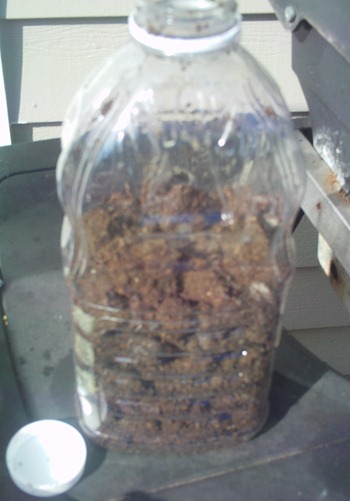
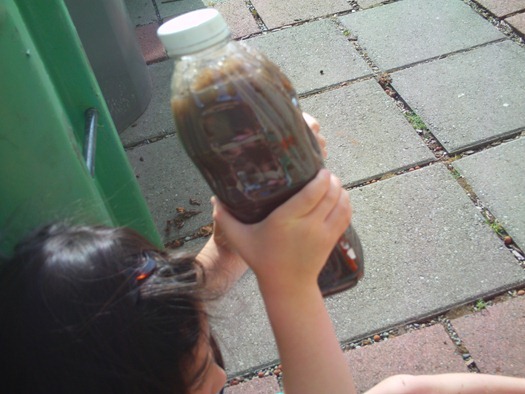
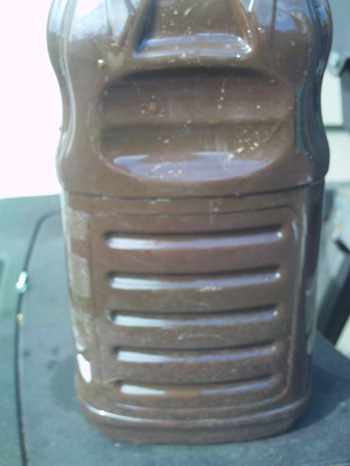
![002[4] 002[4]](http://www.cheapvegetablegardener.com/wp-content/uploads/2010/07/0024_thumb.jpg)
